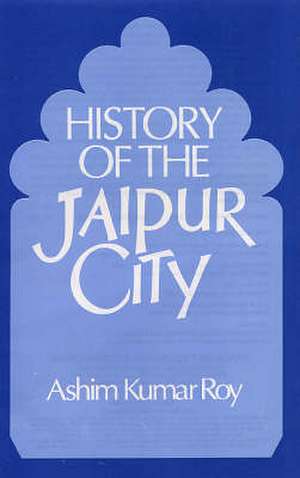History of the Jaipur City
Autor Ashim Kumar Royen Limba Engleză Hardback – 31 dec 2005
Preț: 321.60 lei
Preț vechi: 392.06 lei
-18% Nou
Puncte Express: 482
Preț estimativ în valută:
61.56€ • 64.67$ • 51.73£
61.56€ • 64.67$ • 51.73£
Carte indisponibilă temporar
Doresc să fiu notificat când acest titlu va fi disponibil:
Se trimite...
Preluare comenzi: 021 569.72.76
Specificații
ISBN-13: 9788173046971
ISBN-10: 8173046972
Pagini: 286
Ilustrații: 5 b/w illus
Dimensiuni: 145 x 225 x 23 mm
Greutate: 0.5 kg
Editura: Manohar Publishers
Colecția Manohar Publishers (IND)
ISBN-10: 8173046972
Pagini: 286
Ilustrații: 5 b/w illus
Dimensiuni: 145 x 225 x 23 mm
Greutate: 0.5 kg
Editura: Manohar Publishers
Colecția Manohar Publishers (IND)
Cuprins
Preface; Jai Singh II, The Founder of The City; Planning of the Jaipur City; The Period of Decay 1800-35; Growth of the City 1835-80; The Period of Stagnation 1880-1922; Modernisation 1922-1940; Religious life; Appendices; Bibliography; Index.
